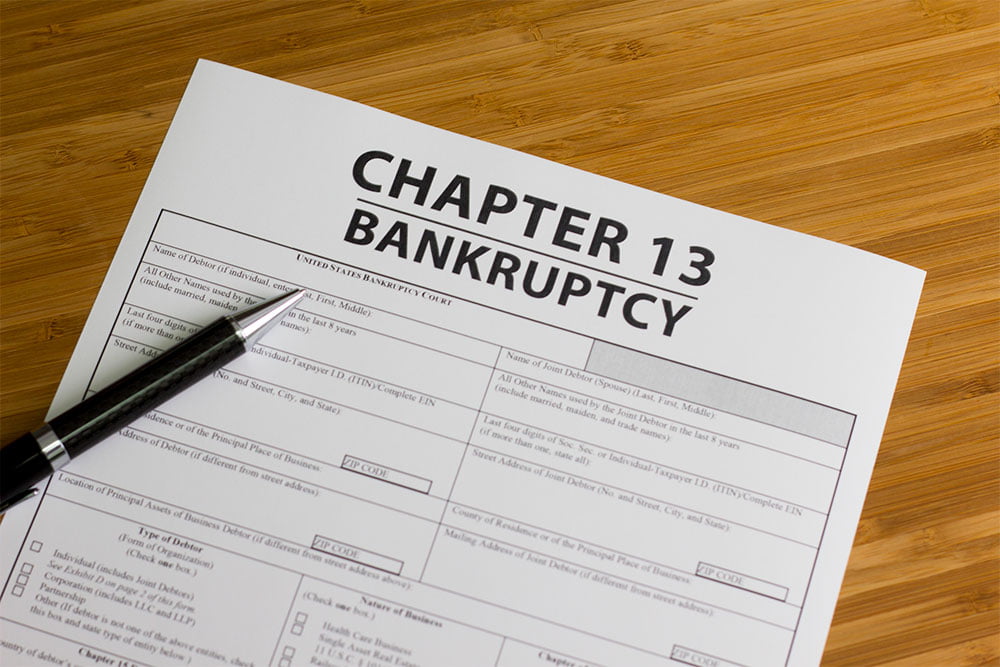There are typically 2 types of bankruptcies an individual can file. The first and most common is a chapter 7 bankruptcy, which typically only lasts 4 months. The other option is a chapter 13. A chapter 13 bankruptcy can last 3-5 years, depending on a few factors. It allows someone to reorganize their debts. Car loans, furniture loans, pay day loans, taxes, mortgage arrears, credit cards, medical expenses and other miscellaneous debt can all be thrown into the chapter 13 case. Creditors cannot opt out and must be repaid through the chapter 13 process. And individuals filing a 13 cannot pick and choose which debts are included as they all have to be. So how does it work?
The debtor (the person who filed the chapter 13) has to pay regular monthly payments to the chapter 13 trustee assigned to their case. The chapter 13 trustee in turn pays the creditors according to the chapter 13 plan that was filed by the debtor and approved by the court. Upon completion of the chapter 13 plan (typically 3-5 years), the debtor, if eligible, will receive a discharge from any unpaid creditors.
Sounds simple but there’s a lot more to a chapter 13. Who has to be paid in a chapter 13? If the debtor wants to keep a car, the car creditor has to be paid, either in full or the value of the car. Same with furniture or other secured items that were financed. Mortgage arrears can also be paid through the plan. So a 13 is used quite frequently to stop a foreclosure from happening and allow the debtor to catch up the arrears on the mortgage. The debtor will have to maintain their regular mortgage payments going forward in order to keep the house.
What about taxes? Do they have to be paid? There are many things to look at to determine if taxes (such as IRS or state taxes) have to be paid through the plan. How old the taxes are, when the taxes were filed, when they were assessed, and is there a valid tax lien all come in to play to determine if the taxes have to be paid in full. If they don’t have to be paid, they’ll be lumped in with the other unsecured debts (like credit cards, medical bills, old utilities, etc.).
So what about the unsecured creditors? How much do they have to be paid in a chapter 13? The simplest answer is “How much can the debtor pay them while still being able to maintain all normal household expenses”. If the debtor can only afford just paying the secured creditors and taxes, he or she may not be required to pay back any of the unsecured debt. If there is enough to pay them all back, then they will be required to do so. Unsecured creditors can be paid anywhere between 0% to 100%. Having an experienced bankruptcy attorney can help in keeping the debtor’s payments to unsecured creditors down which ultimately results in a lower chapter 13 payment.
A chapter 13 is a great tool for those individuals trying to save a house from foreclosure, stop a repossession of a car, or just trying to get help with overwhelming debt (including tax debt). If you or someone you know would like to find out how or if a chapter 13 can help, please call our office and to set up a free consultation.
Brian Limbocker, J.D., LL.M.
Limbocker Law Firm, LLC
2230 Towne Lake Parkway
Building 800, Ste. 140
Woodstock, GA 30189
678-401-6836
(Offices also available in Marietta, Kennesaw, Atlanta and Duluth)




